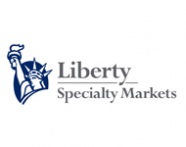Why Nike's virtual shoes are a step towards the future of fine art insurance

Authored by Liberty Specialty Market Fine Art & Specie Underwriting Manager, London, Ross Drabble
The market for NFT-linked digital art is raising difficult questions for fine art underwriters. Ross Drabble feels NFTs could solve problems that have dogged the sale of fine art for centuries.
Sportswear manufacturer Nike is not usually associated with the fine art insurance market but a patent filed by the company in 2019 may well hold the answer to a problem that fine art underwriters have been grappling with. That problem is non-fungible tokens. NFTs: the biggest step-change to hit the art market in years – and they are making underwriters reassess their stance on physical and digital risks.
What Nike proposed in 2019 was an approach to NFTs that transcends their digital origins and makes them relevant to the physical world. But before we get to Nike’s idea, we need to understand what NFTs are and why they pose such a challenge to fine art insurers.
Digital Ownership
In March this year, auction house Christies sold a piece of digital art called Everydays: The First 5,000 Days for $69m. The work by American artist Beeple comprises 5,000 digital images ‘stitched together’ to form a single digital work. This gives rise to the question about the ability to own a digital work. A digital file such as JPEG file can be copied multiple times, each copy being identical to the original. What, therefore, differentiates the thousands of copies from the original and proves ownership?
The answer is non-fungible tokens. Fungibility is the ability for something to be exchanged for an item of similar value. Cash, therefore, is highly fungible. NFTs are not. NFTs are unique digital assets or ‘tokens’ that derive from the Ethereum blockchain. They are essentially a unique string of numbers and letters stored in the blockchain ledger. The NFT cannot be copied or cloned and its provenance is indelibly recorded. This token is embedded in the digital artwork, thus proving its identity and its owner. So far, so good.
New marketplace
In effect, NFTs create a market for digital items such as images, video, music and code that previously had no sale value. Because the NFT holds value, digital items can be bought, sold, collected and traded in the same way as traditional fine art. For example, a well-known video of a child making a disapproving expression sold recently for £54,000 at auction.
While, on the face of it, the establishment of a new art market is good news for fine art insurers, there is a catch. That catch is what I could describe as the lack of physicality. A digital video clip exists in the digital realm. Fine art and specie insurers insure physical objects against physical risks – the impact of flooding or fire on a gallery full of paintings or ceramics being a typical risk. Physical loss and damage are what we offer protection against.
Cryptocurrency may be primarily a digital risk, but there are physical aspects – and that is where Liberty Specialty Markets offers insurance protection. Access to the digital assets like cryptocurrency is protected through a ‘cold’ storage solution whereby offline hardware wallets are utilised to secure private keys required to access such assets. Such wallets are then stored and secured from the physical threats and risks that exist.
Immature market
At present, no NFT-specific product exists within the fine art insurance market because the offline cold storage solution has not been widely developed or adopted by collectors/owners of NFTs. Major auction houses are involved in the marketing and sale of NFTs but discussions within the market around a cold-storage solution are yet to be finalised.
However, NFTs are not simply a passing fad. They represent a technological innovation that has very real ramifications for underwriters.
The market for NFTs is also very immature at this stage. The traditional fine art market has developed over hundreds of years and has all the necessary infrastructure to allow it to function. The provenance of works can be established by skilled experts; prices can be assessed by valuers and backed up by historical data; legal matters can be addressed by expert lawyers; damaged works can be repaired or restored by craftspeople with a lifetime’s experience built up in the sector. The insurance industry itself has also amassed tremendous knowledge about the art market. There is an established and somewhat defined marketplace.
Digital art, by contrast, currently exists in a vacuum. The market for these items is undeveloped and lacks the structure of the fine art market. At a practical level, how would one assess the value of an NFT-linked work when a policy renews? Similarly, if a piece of digital art were damaged, could it be repaired or would this be a total loss-only market? And how would you value it in the event of a total loss if the market and values are volatile? How many insurers would have a claims team with sufficient experience of NFTs to know how to process a claim?
While it’s likely that an insurance market for NFTs will evolve, time will tell whether that market resides in fine art. Online, cyber-crime coverage is available in the market for NFTs, but it remains to be seen where the opportunities will exist in the future. Arguably, it is for underwriters to collaborate within our own companies to tap into the expertise and knowledge that exists across underwriting and non-underwriting functions.
NFTs and physical art
NFTs do have a future in the fine art market, although not necessarily the one being mooted currently. Digital art integrated with NFTs will always be challenging for fine art insurers, but NFTs associated with physical art could prove highly beneficial – which brings me back to Nike.
In 2019, Nike filed a patent for blockchain compatible trainers called CryptoKicks. Nike’s concept was a pair of physical trainers linked by an NFT to a pair of virtual trainers. This then allows the creation of new virtual characteristics which can, in turn, be manufactured as a new type of trainer in the real world.
The most significant element of Nike’s patent for fine art underwriters is the connection between the NFT and the physical object. What this means is that NFTs can be used to confirm ownership and authenticate any work of art, not just digital ones. This ability may, in the longer term, signal an end to the problems caused by forgeries, defective title and theft across the art market. NFTs could be used as completely reliable certificates of ownership and to provide provenance as the history of ownership of the artwork would be indelibly written in the blockchain. New York-based company Flipkick has been established to do exactly this - provide a ‘tokenisation’ process of artworks for the artists themselves or collectors, allowing works to be authenticated and opening new revenue streams.
While attention is currently focused on the sale of digital art, the real value of NFTs is likely to lie in the ability to prove both ownership and provenance via the blockchain. This would revolutionise aspects of the fine art market and answer some of its questions that have dogged this market for centuries.
About Liberty
Liberty Specialty Markets offers specialty and commercial insurance and reinsurance products across key UK, European, Middle East, US and other international locations.
We provide brokers and insureds with a broad range of products through both the Company and Lloyd’s markets and have over 1,700 staff in approximately 65 offices. Liberty Specialty Markets was established in September 2013 bringing together Liberty’s company, syndicate and reinsurance operations into one combined operation, composed of three business units: Commercial, Specialty, and Reinsurance (Liberty Mutual Re). This integrated approach means brokers and clients can benefit from our global reach and operating efficiencies.
Liberty Specialty Markets is part of global insurer, Liberty Mutual Insurance Group, a diversified global insurer, formed in 1912 and headquartered in Boston, Massachusetts. Liberty Mutual is the 5th largest global insurer based on 2017 gross written premium, with over 50,000 employees in 30 countries and economies around the world. Our purpose is to help people embrace today and confidently pursue tomorrow. The promise we make to our customers throughout the world is to provide protection for the unexpected, delivered with care. We achieve this by offering a full range of personal, commercial, and specialty Property & Casualty insurance coverages. Our customers’ trust has earned us the 68th spot on the Fortune 100 list of largest corporations in the U.S., based on 2017 revenue.

